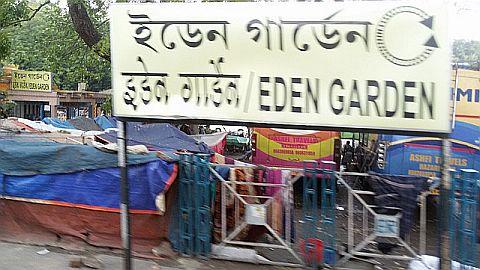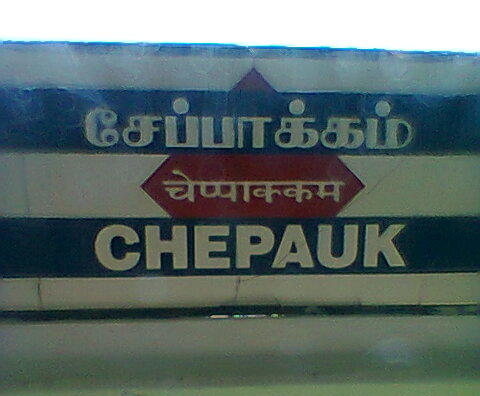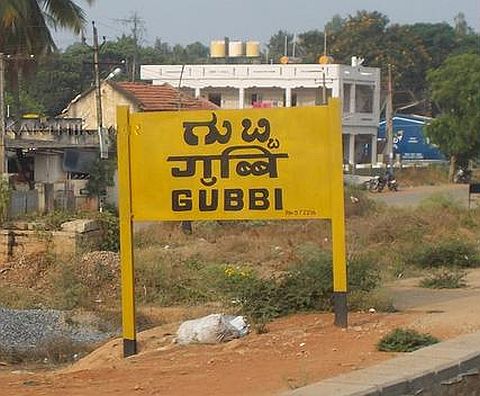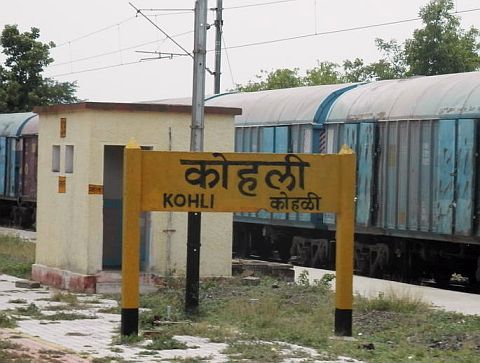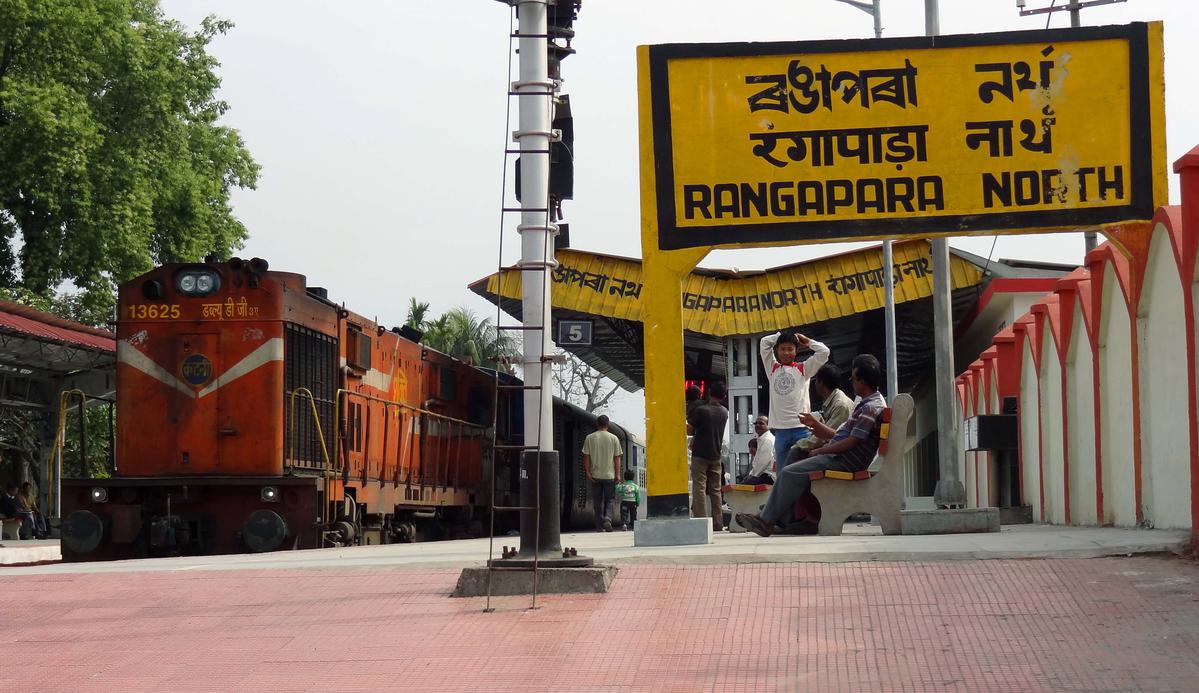If there is one thing crazier than an Indian railfan, it is the British railfan. They have been at it for over a hundred years with specialized publications starting from the 19th century. Anyway, we take a look at this collection of trivia about British stations:
http://www.railwaycodes.org.uk/stations/bilingual.shtm
To begin with, all stations in Scotland must have signs in English and Gaelic. Likewise in Wales all stations must have signs in English and Welsh. Often there is a considerable difference between the two place names of a station.
In the tiny system on the Isle of Man, it is Manx Gaelic along with English.
Northern Ireland is not covered here.
Then it starts getting interesting. Cantonese in Irlam, Punjabi in Southall, Urdu in Levenshulme. See the comment for Levenshulme (click to enlarge).
Here are the signs at Irlam, a small station in Greater Manchester:
A quick look at the Wikipedia article for this place does not say anything about the Chinese population in the vicinity.
Most readers here will be familiar with Southall:

This western suburb of London has a large Punjabi (mainly Sikh) population.
And finally to the lesser-known Levenshulme:
This is also in the Greater Manchester area and has a large population of Pakistani origin.
Extensive research by British railfans has failed to find other station signs in languages other than English. As the article says, there are a number of welcome signs and general signs in various languages, but these are the only platform nameboards in other languages.
Thanks to Mark Lester for pointing me to this site. It contains some other trivia about various aspects of stations in Britain. Note that while Northern Ireland is part of the United Kingdom, it is not part of Britain.
Afterthoughts: all said and done, Britain has become an increasingly multicultural and multilingual society. The vote for Brexit was partly due to this, though the voter’s ire was directed more against the immigrants from the far-flung parts of the EU rather than the Asians. But one wonders what the average native Brit thinks when the majority of his or her fellow passengers in a Tube coach are clearly of non-British (and that too non-European) origin. I did observe this phenomenon a decade ago. For that matter, a significant number of rail transport employees (particularly in and around London) are of Asian or West Indian origin, though they and perhaps their parents and even grandparents may have spent their lives there.
There was a time in the late 1940s and early 1950s where the London transport authorities had recruiting offices in places such as Barbados and Jamaica (which were still colonies then) where any able-bodied male was offered free transport to Britain if he was prepared to work for them.






























